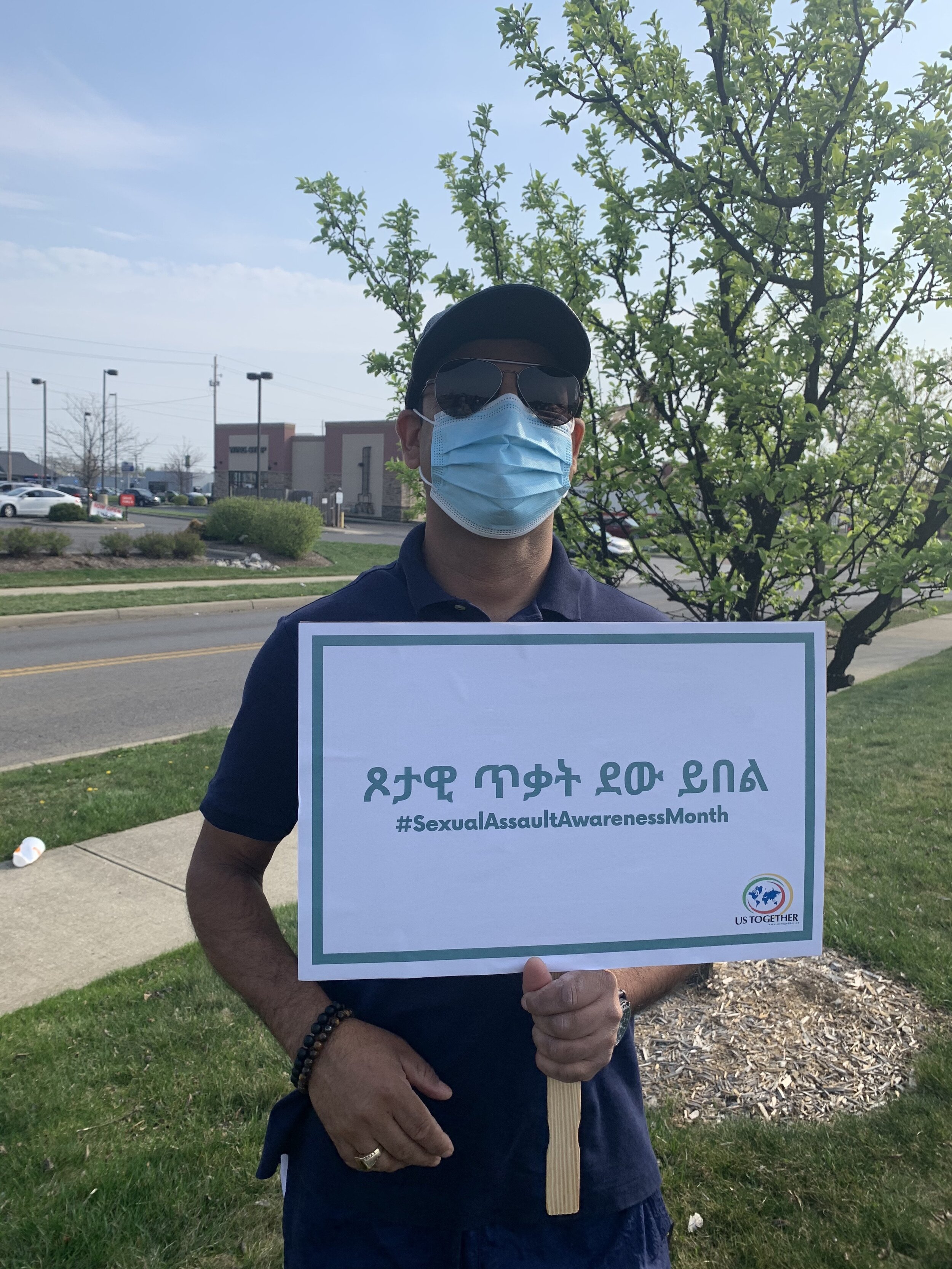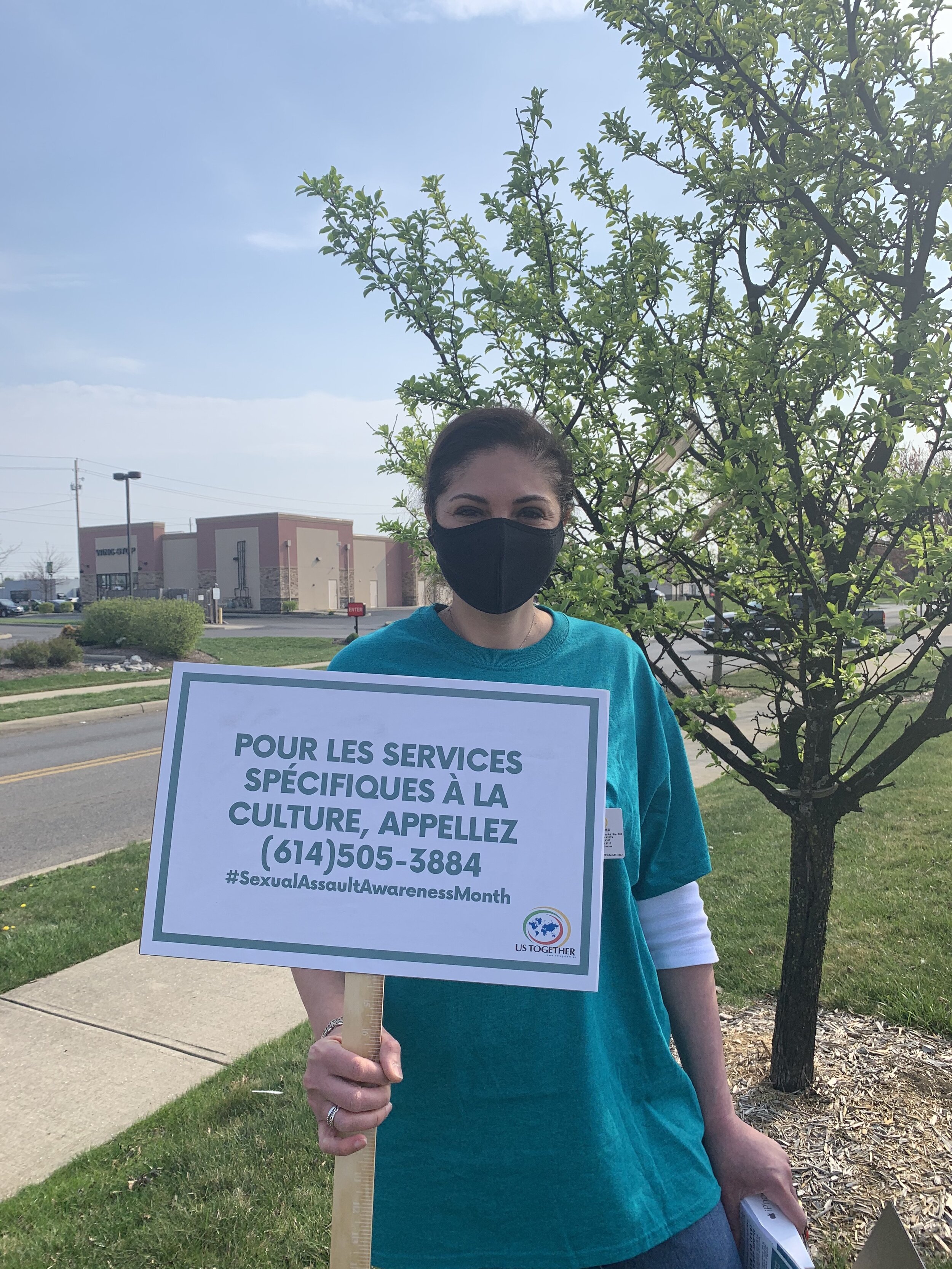US Together Columbus Sexual Assault Awareness Month March
Content warning: sexual violence
On April 8, staff, interns, and AmeriCorps VISTA members at US Together went on a 3.5-mile march through neighborhoods we serve in order to spread awareness about sexual assault. We were also fortunate to be joined by partners from Advocating Opportunity, an incredible organization dedicated to providing legal services and advocacy to victims of trafficking. Below, see a gallery of pictures from the event!
The goal was to meet Columbus residents—particularly those who are Limited-English Proficiency (LEP)—where they live in order to share resources in their native languages. We carried signs in languages spoken by many of Columbus’ refugee and immigrant populations, including English, Nepali, French, Somali, Swahili, and Tigrinya. We also handed out information about sexual assault laws in Ohio, victims’ rights, and help lines for survivors. For resources in English, Swahili, Somali, Nepali, and Kinyarwanda, click here.
While Sexual Assault Awareness Month continues through the month of April, it’s a critically important topic year-round. It is imperative that we continue to share resources and speak out against sexual assault and gender-based violence. If you or someone you know is in need of immediate help, you can call for free, confidential 24/7 support from the national Rape, Abuse, and Incest National Network (RAINN) at 1-800-656-4673.
For more resources and information about preventing sexual violence in our community, check out our previous blog posts:
This project was supported by subgrant No. 02560782SA0121 awarded by the state administering office for the SASP Formula Grant Program. The opinions, findings, conclusions, and recommendations expressed in this publication/program/exhibition are those of the author(s) and do not necessarily reflect the views of the state or the U.S. Department of Justice, Office on Violence Against Women.
This graphic was produced by US Together, Inc. under 2020-V3-GX-K004, awarded by the Office for Victims of Crime, Office of Justice Program, U.S. Department of Justice. The opinions, findings, and conclusions or recommendations expressed in this [graphic] are those of the contributors and do not necessarily reflect the official positions or policies of the U.S. Department of Justice.
This project was supported by Grant No. 2018-KS-AX-0008 awarded by the Office on Violence Against Women, U.S. Department of Justice. The opinions, findings, conclusions, and recommendations expressed in this publication/program/exhibition are those of the author(s) and do not necessarily reflect the views of the U.S. Department of Justice.













